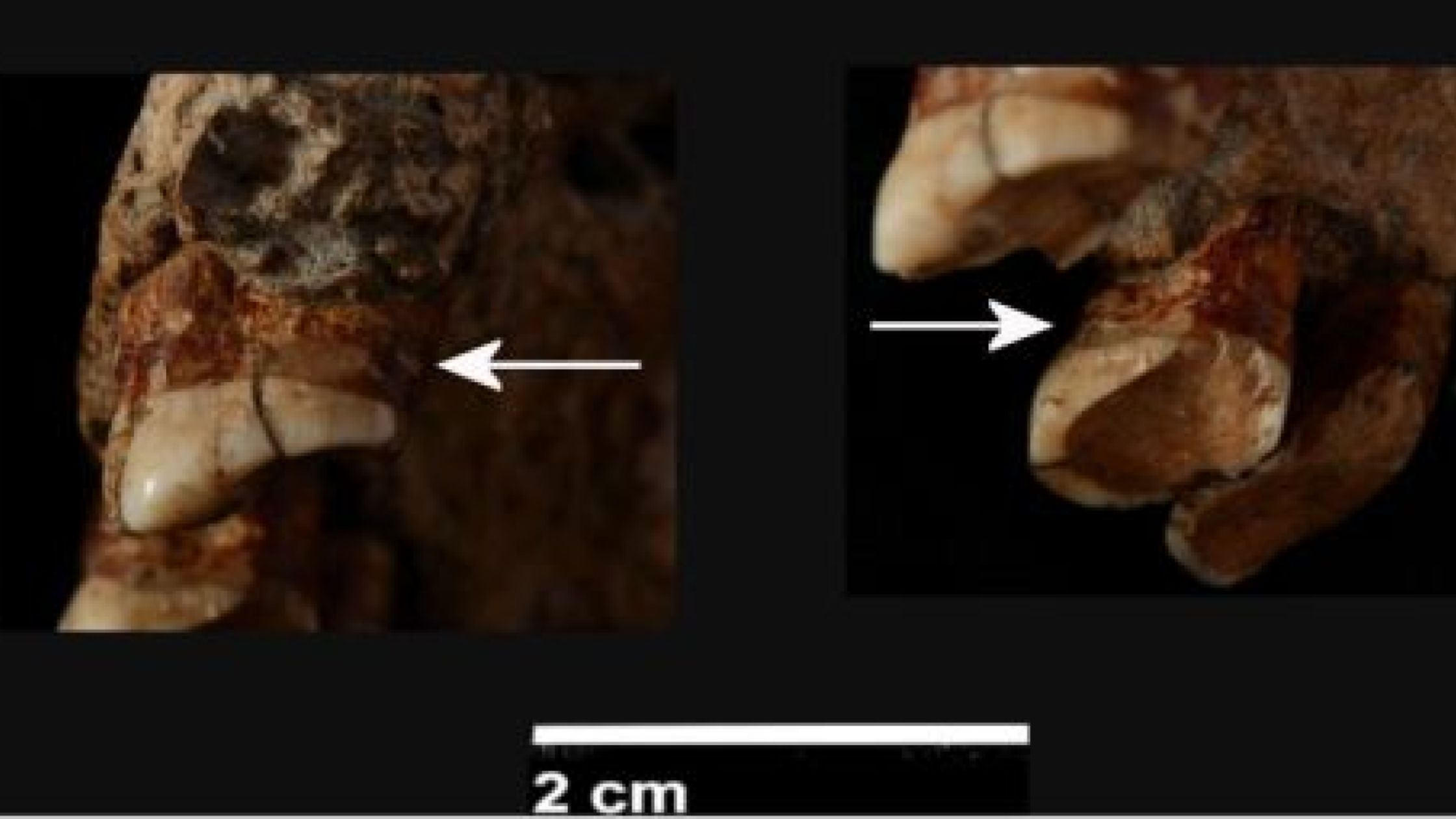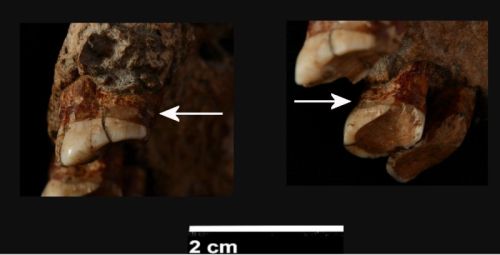Picked Clean: Neanderthals’ Use of Toothpicks to Fight Toothache
The toothpick —an often unnoticed tool for post-meal rituals and appetizer stability—has played a greater role in our ancestors’ health and comfort than many would imagine. In a world before dentists, Neanderthals and modern humans may have taken oral hygiene into their own hands using the only tools they had readily available: little bits of nature they found surrounding them.
Researchers from Spain have presented evidence in PLOS ONE that Neanderthals may have used small sticks or blades of grass not only to remove fragments of food from between their teeth, but also to lessen the pain caused by periodontal disease, a form of gum disease. While multiple human and Neanderthal remains have been found showing possible evidence of toothpick use, the authors propose that the combined evidence of toothpick use and gum disease suggests that Neanderthals were perhaps practicing an early form of dental care.
The samples in the image above show an adult’s upper jaw with three teeth left intact found at the Cova Foradà cave site in Valencia, Spain, amidst animal remains and tools dated to the Mousterian era (300,000-30,000 years ago). The adult teeth, believed to belong to an individual between 35-45 years old, show heavy wear on the top surface and exposed roots, the possible result of a lifetime’s consumption of fibrous and abrasive foods like meats and grains. There are no signs of cavities in the remaining teeth, though decayed bone and the porous surface texture of the left side of the jaw indicate the presence of gum disease.
Two distinct grooves are present on the sides of the existing premolar and molar above the crown of the tooth. These grooves may have been caused by consistent dragging of a tool across the side of the tooth. The existence of these marks above the gum line indicates heavy dental wear and disease. Here, the gums had receded and left the base of the tooth unprotected. With the roots exposed, it would be easy for leftover debris from meals to get stuck and put pressure on already inflamed gums. The use of a foreign object pushed between the teeth would remove any particles lodged in this sensitive area. Without the extra burden of invasive food detritus, force on the gums would be reduced and irritation and pain would decrease.
Over the last few years, studies have shown that Neanderthals may have been capable of complex behaviors and emotions, may have used a sophisticated language, were more often right-handed than left, and were generally not the inferior cousins some thought they were. As this study shows, they may have practiced dental care as well. So, the next time you’re heading out of your favorite restaurant, take a good look at that bowl of toothpicks at the front: the contents could very well be evidence of one of our oldest habits.
Check out more coverage of this article in National Geographic and Archaeology magazine.
UPDATE: This post has been updated to reflect that the research in this study may suggest that Neanderthals used a toothpick like tool to relieve dental pain, though it is not possible to make definite claims.
Citation: Lozano M, Subirà ME, Aparicio J, Lorenzo C, Gómez-Merino G (2013) Toothpicking and Periodontal Disease in a Neanderthal Specimen from Cova Foradà Site (Valencia, Spain). PLOS ONE 8(10): e76852. doi:10.1371/journal.pone.0076852
Image Credit: Image from Figure 2 of the manuscript

